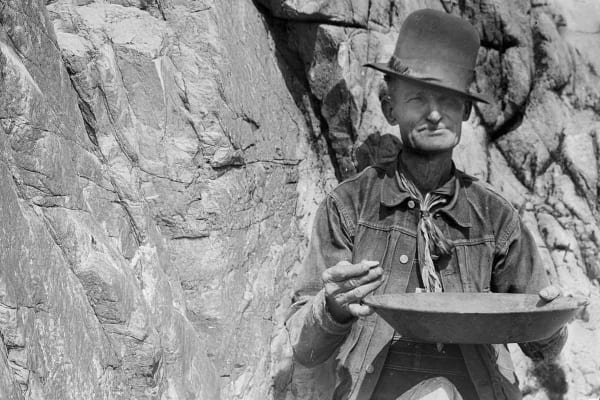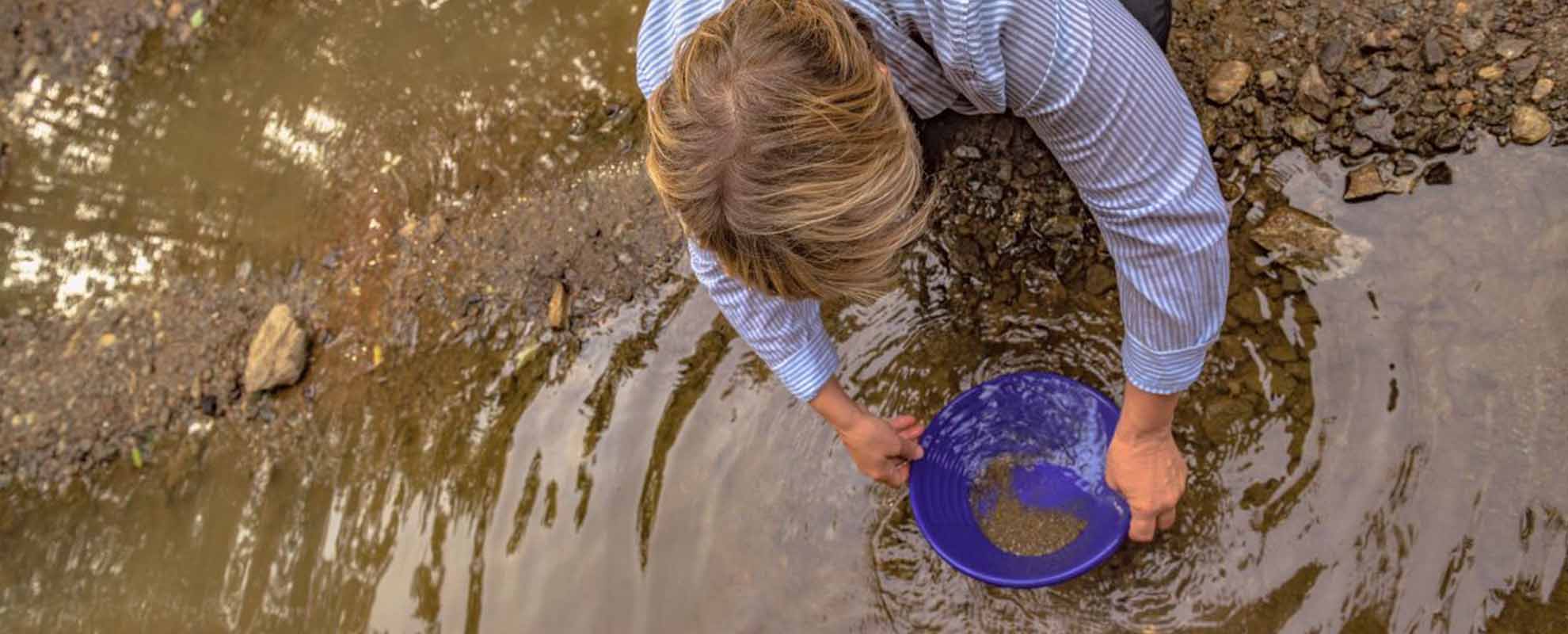
What Year was Gold Discovered in California?
The California gold rush: The discovery that changed a nation

Disclaimer: Gold prospecting in the UK is subject to strict legal and environmental regulations. Access to rivers, land, and mineral rights must always be obtained lawfully. In particular, much of the UK's gold-bearing land is under private or Crown Estate ownership. The Crown Estate does not permit gold panning on any of its land. Always seek the landowner's permission before panning or detecting, and check for environmental designations such as Sites of Special Scientific Interest (SSSIs) where activity may be restricted or prohibited.
Gold holds a special allure, capturing imaginations and drawing adventure-seekers to its hidden treasures. In the UK, searching for this precious metal isn't just the domain of professional miners - it has become a popular hobby for enthusiasts eager to explore nature with a gold pan or metal detector in hand.
From the scenic streams of Scotland to the historical goldfields of Wales, there are several locations across the country where flakes and nuggets have been found. Whether you're planning your first panning trip or looking to sharpen your skills, this guide explores the best-known areas, legal considerations, and practical tips to help you begin your golden adventure.
Gold in the UK is generally found in areas with historic mining activity, such as the Scottish Highlands, the Dolgellau Gold Belt in Wales, and parts of southwest England. Although rare, small quantities of alluvial gold have also been discovered in rivers like the Swale in Yorkshire and the Teign in Devon.
Scotland remains the most popular and productive region for gold prospecting in the UK. The Kildonan Burn near Helmsdale, Sutherland, became famous during a mini gold rush in the 1860s and is still visited today by hobbyists. The area around Leadhills and Wanlockhead in South Lanarkshire also has a long-standing gold mining heritage, with reports of small-scale finds continuing into the present.
Public access rights in Scotland allow for recreational outdoor activity, but removing gold still requires the landowner's consent, even in areas with broad public access under the Land Reform (Scotland) Act 2003.
The Dolgellau Gold Belt in Gwynedd, North Wales, was historically the site of major commercial gold mining, including the Clogau and Gwynfynydd mines. While most of the goldfields are now privately owned or protected, panning may be permitted on certain stretches of river with landowner permission.
Rivers like the River Mawddach and River Cothi (the latter associated with ancient Roman mining) are sometimes visited by enthusiasts. However, panning in Wales must always be preceded by securing the necessary permissions, as many sites are environmentally sensitive or fall within privately held mineral rights.
Gold occurrences in England are rarer but not unknown. The Lake District (particularly around Keswick and the River Duddon) has recorded minor finds, and Cornwall's mineral-rich geology has yielded small traces of gold near tin mining sites.
In Yorkshire, the River Swale is sometimes cited for historical flake discoveries, though these are extremely rare and reports are largely anecdotal.
Certain rivers have gained attention among UK prospectors due to favourable geology and historical activity. However, even in these rivers, gold tends to be present only in trace amounts.
Gold, being heavy, tends to accumulate in areas where water slows down. In rivers, look behind large rocks, in crevices, or on the inside bends of meanders. These are known as depositional zones - natural traps for heavier particles.
Panning tips:
Though less common than panning in the UK, metal detecting can uncover gold, especially in areas with past mining activity.
Gold-specific detectors, such as the Minelab Gold Monster 1000 or Garrett AT Gold, are ideal. These operate at higher frequencies and are sensitive to small nuggets.
All naturally occurring gold in the UK belongs to the Crown, regardless of who owns the land. In practice, this means:
Some rivers and uplands are protected as Sites of Special Scientific Interest (SSSIs). Digging or disrupting riverbeds in these areas may breach environmental regulations and attract fines.
The UK gold industry is small but historically rich. Roman and Victorian-era mines in Wales and Scotland left behind a heritage of scattered gold deposits. Today, nearly all gold prospecting is recreational or small-scale.
According to the British Geological Survey, UK gold production is minimal - around 10 kg per year, mostly from hobbyists and limited commercial activity.
Nonetheless, the appeal remains strong, fuelled by community clubs, outdoor events, and the timeless draw of discovery.
Joining a local gold prospecting club is one of the best ways to learn and explore safely. These groups often arrange outings, provide training, and give access to private land by agreement.
Participating in forums, club challenges, and gold shows (such as the UK Detector Show) helps build experience and connect with others who share your interest.
Armed with both essential tools and trusted resources, your pursuit of gold in the UK becomes more than just a hobby - it evolves into an adventure filled with promise and potential rewards.
In summary, understanding where to find gold in the UK requires a combination of quality equipment and reliable information, transforming your quest into an exciting journey worthy of exploration.

The California gold rush: The discovery that changed a nation

The simple answer is 'no', gold is not magnetic. However, without further explanation, items of gold jewellery will likely get incorrectly rejected, so let's delve a little deeper!

Read about the history of the gold standard, its advantages and disadvantages.